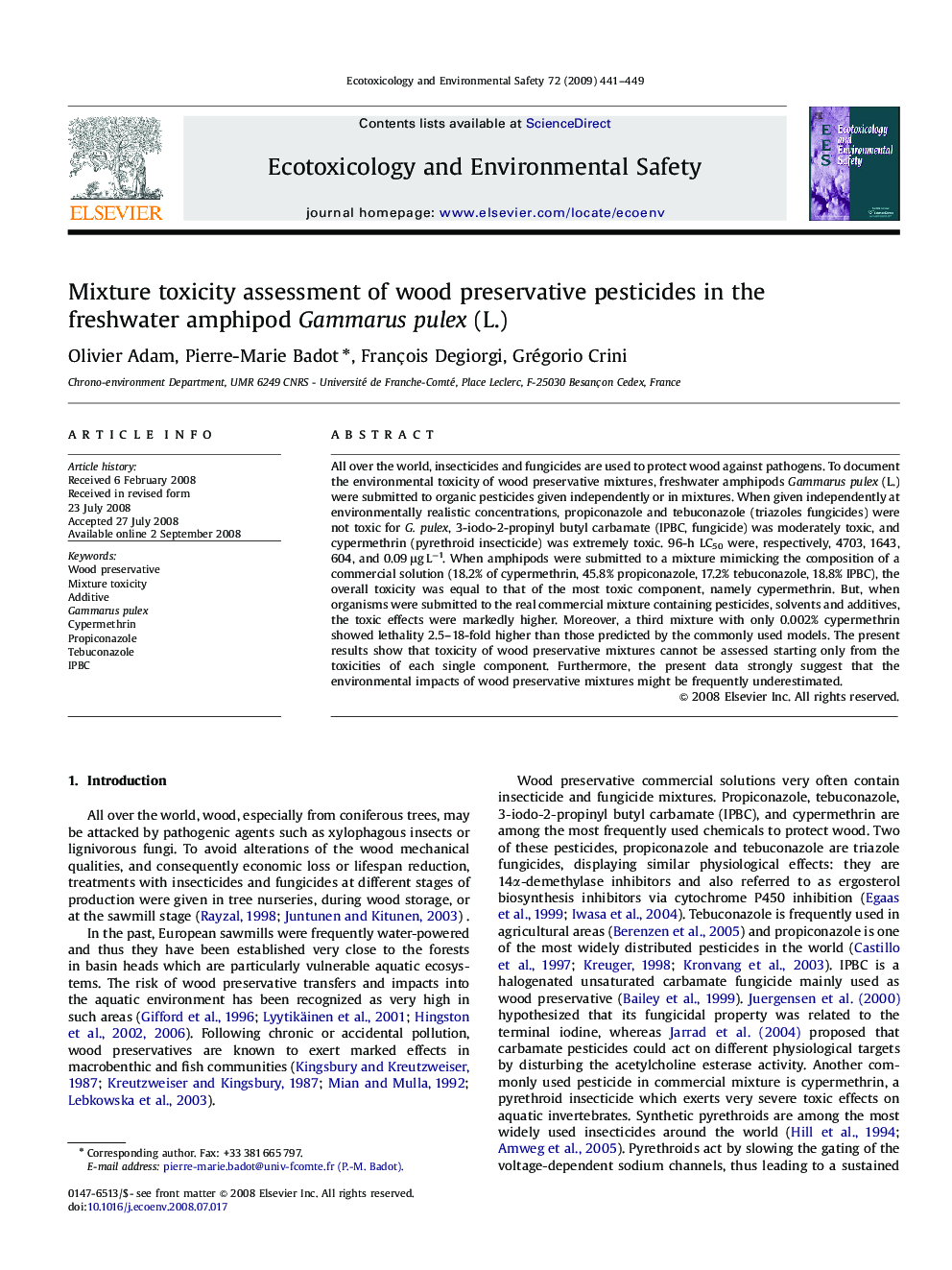| کد مقاله | کد نشریه | سال انتشار | مقاله انگلیسی | نسخه تمام متن |
|---|---|---|---|---|
| 4422006 | 1308528 | 2009 | 9 صفحه PDF | دانلود رایگان |

All over the world, insecticides and fungicides are used to protect wood against pathogens. To document the environmental toxicity of wood preservative mixtures, freshwater amphipods Gammarus pulex (L.) were submitted to organic pesticides given independently or in mixtures. When given independently at environmentally realistic concentrations, propiconazole and tebuconazole (triazoles fungicides) were not toxic for G. pulex, 3-iodo-2-propinyl butyl carbamate (IPBC, fungicide) was moderately toxic, and cypermethrin (pyrethroid insecticide) was extremely toxic. 96-h LC50 were, respectively, 4703, 1643, 604, and 0.09 μg L−1. When amphipods were submitted to a mixture mimicking the composition of a commercial solution (18.2% of cypermethrin, 45.8% propiconazole, 17.2% tebuconazole, 18.8% IPBC), the overall toxicity was equal to that of the most toxic component, namely cypermethrin. But, when organisms were submitted to the real commercial mixture containing pesticides, solvents and additives, the toxic effects were markedly higher. Moreover, a third mixture with only 0.002% cypermethrin showed lethality 2.5–18-fold higher than those predicted by the commonly used models. The present results show that toxicity of wood preservative mixtures cannot be assessed starting only from the toxicities of each single component. Furthermore, the present data strongly suggest that the environmental impacts of wood preservative mixtures might be frequently underestimated.
Journal: Ecotoxicology and Environmental Safety - Volume 72, Issue 2, February 2009, Pages 441–449